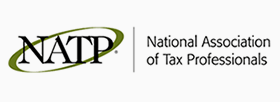A sweeping new piece of legislation—the One Big Beautiful Bill Act— has officially passed and is set to bring some of the most significant tax reforms we’ve seen in years. Taking effect as early as January 1, 2025, this law impacts individuals, families, and business owners across the country.
This isn’t just about extending a few expiring provisions. It introduces brand-new rulesn that could reshape your personal finances and how businesses operate. Here’s a breakdown of what the new law means for you.
Key Changes Starting this 2025
Higher Standard Deductions
Updated: These are now permanent.
For tax year 2025, the standard deduction is:
- Single and MFS: $15,750 (was $16,000 estimated before)
- Head of household: $23,625 (was $24,000 estimated)
- Married filing jointly/QSS: $31,500 (was $32,000 estimated)
Pro Tip: With a higher standard deduction, more taxpayers may opt out of itemizing, simplifying the filing process.
New Senior Deduction
Updated: Additional $6,000 deduction (2025–2028)
For taxpayers age 65 and older, an additional $6,000 deduction is available. It phases out at MAGI over $75,000 (single) or $150,000 (MFJ). Not available for MFS filers.
Personal Exemptions
Updated: Permanently eliminated.
The temporary TCJA removal of personal exemptions is now permanent.
New Vehicle Loan Interest Deduction
Thinking of buying a new car? From 2025 to 2028, you could deduct up to $10,000 in interest on loans for new vehicles assembled in the United States.
Deduction phases out at $100,000 (single) / $200,000 (MFJ) and must include VIN on tax return.
Child Tax Credit Gets a Raise:
The Child Tax Credit is permanently increased to $2,200 per child, with inflation indexing and income phaseouts of $200,000 (single) and $400,000 (MFJ).
Other Dependent Credit
Updated: $500 nonrefundable credit for other dependents is now permanent.
Tips and Overtime Could Be Tax-Free (Partially)
From 2025 to 2028, you can deduct up to $25,000 for qualified tips you receive. This applies to both W-2 employees and 1099-K contractors. Just be aware, not available for MFS filers. Phaseout starts at $150,000 (single) / $300,000 (joint).
Similarly, you might be able to deduct up to $12,500 ($25,000 for joint returns) for qualified overtime pay.
Changes Coming in 2026 and Future Tax Years
Higher SALT (State and Local Tax) Deduction Cap
The SALT cap increases to $40,000 for taxpayers under $500,000 income, effective 2025.
Updated: The cap gradually reduces by 30% for incomes over $500,000, and adjusts 1% annually
Phaseout of Itemized Deductions for High-Income Earners
Taxpayers in the highest income tax bracket will now see itemized deductions capped.
Updated: This cap is now permanent and applies only to the top bracket.
New Excise Tax on International Transfers
Starting January 1, 2026, a 1% excise tax will be levied on money transfers made by individuals to foreign recipients. This change may significantly impact taxpayers who regularly send money abroad.
Charitable Deduction for Non-Itemizers
Updated: Effective 2026, non-itemizers can deduct $1,000 (single) or $2,000 (MFJ) in charitable contributions.
Refundable Adoption Tax Credit:
Effective 2026. $5,000 of the credit is now refundable and indexed to inflation starting in 2025. Tribal recognition now included for special needs classification.
Child & Dependent Care Credit
Updated for 2026:
- Max credit: 50% of $3,000 (1 child) or $6,000 (2+)
- Phase-out based on AGI; credit drops to 20% beyond $105,000 (single) / $210,000 (MFJ)
Education-Related Changes
- SSN now required for education credits and student loan exclusion
- 529 accounts expanded for new expenses (tutoring, testing, etc.)
- Scholarship donation credit of up to $1,700 starting 2027
- Employer student loan contributions up to $5,250 made permanent (2026)
- Expanded educator expenses, including coaches (2026)
Clean Energy Incentives Repealed
Updated: These credits are being terminated as follows:
- Used/Clean Vehicle Credits: End Sept 30, 2025
- EV Refueling Property Credit: Ends June 30, 2026
- Residential Energy Credits: Ends Dec 31, 2025
- Energy-Efficient Commercial & Home Credits: End June 2026
Businesses Tax Updates You Should Know
Increased Qualified Business Income (QBI) Deduction
Updated: QBI deduction (20%) is now permanent.
Phaseouts have increased, and a new minimum deduction of $400 applies for businesses with at least $1,000 in QBI (effective 2026).
New SALT Cap Restrictions for Pass-Through Entities
Pass-through entity owners (LLCs, partnerships, S corporations) will face new limits on strategies that previously helped bypass the SALT deduction cap.
Employer-Provided Childcare Credit Expansion:
Businesses looking to support their employees with childcare are getting a significant incentive. The credit increases to 40% of qualified expenses (up from 25%), with a maximum credit of $500,000 (up from $150,000). Small businesses may also deduct up to 50% of qualified childcare expenses, up to a $600,000 cap.
Updated 1099 Reporting Thresholds
- Form 1099-K: Now permanently requires reporting only if >$20,000 and 200+ transactions (retroactive to 2021).
- Form 1099-NEC/MISC: Threshold increased to $2,000, indexed to inflation from 2026 onward.
Updated from prior $600 threshold.
R&D Expensing Reinstated:
Businesses can once again fully deduct domestic R&D costs from January 1, 2025, to 2029 (international R&D must still be amortized).
Bonus Depreciation Returns:
The 100% bonus depreciation for qualified property that is acquired and placed in service is back, effective January 19, 2025, through December 31, 2029. This incentivizes businesses to invest in new assets.
Section 179 Deduction Increase:
Businesses can now deduct a maximum of $2.5 million of qualifying property under Section 179, a significant jump from $1.25 million. Phase-out starts at $4M in qualifying property.
What Does This Mean for You?
This “One Big Beautiful Bill Act” is a game-changer for taxpayers across the board. Whether you’re an individual, a family, or a business owner, these changes are going to affect how you plan and file your taxes.
What This Means for Californians
- Tax Savings vs. Budget Risks
Expanded SALT and standard deductions are a win for California taxpayers. But with repealed clean energy incentives and federal social service cutbacks, the state may need to adjust. - Healthcare and Safety-Net Impacts
Stricter premium credit rules may limit Marketplace coverage and place more pressure on Medi-Cal and SNAP programs. - Clean Energy and Utility Costs
Federal withdrawal from clean energy support could slow local investment, raise utility rates, and cut green jobs.
| 📌 Pros | ❗ Cons |
| Higher deductions for CA residents | National debt increases |
| Expanded family and small biz tax breaks | Cutting Medicaid and SNAP. Millions lose coverage |
| Childcare, adoption, and newborn support | Utility costs may rise |
| Simplified business and 1099 rules | Clean energy incentives repealed |
Final Take
The One Big Beautiful Bill Act delivers broad tax relief for individuals, families, and small businesses. But it also marks a significant shift in federal priorities, with potential ripple effects for healthcare, energy, and inequality.
If you’re in California, here’s what to do next:
✅ Optimize new deductions (tips, OT, QBI)
✅ Reevaluate your 2025 vehicle or clean energy plans
✅ Stay informed about 2026 healthcare credit changes
✅ Talk to a local tax advisor for personalized guidance
Consulting a California-based tax advisor or policy analyst can help you understand how your personal or business finances may shift under this new law.
Updated as of July 18, 2025




